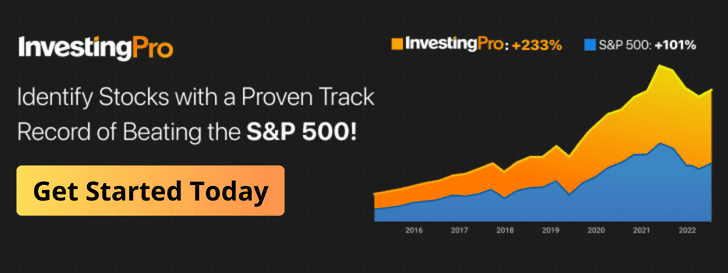Common stocks play a pivotal role in the world of investment, representing ownership in a company and offering potential for long-term growth. Understanding these stocks is crucial for investors navigating the financial markets.
What Are Common Stocks?
Common stocks, a type of equity security, signify ownership in a corporation. Investors who own these stocks become partial owners of the company and typically hold voting rights at shareholder meetings.
Common stocks entitle shareholders to dividends, though not guaranteed, and offer the potential for capital appreciation. However, they have lower priority than preferred stockholders in terms of dividends and liquidation.
How to Calculate Common Stock?
The value of common stock on a company’s balance sheet can be calculated using this formula:
Common Stock = Total Number of Shares Issued × Par Value Per Share Common
In this formula,
- Total Number of Shares Issued refers to all shares that have been sold to investors.
- Par Value Per Share is the nominal value assigned at issuance, often minimal (e.g., $0.01 per share).
However, the market value of common stock depends on share price fluctuations, which are influenced by earnings, demand, and macroeconomic conditions.

Example Calculation of Common Stock
A company issues:
- 10 million shares
- Par value: $1 per share
Common Stock = 10,000,000 × 1 = $10,000,000
However, if the stock trades at $50 per share on the stock market, the market capitalization is:
Market Capitalization = 10,000,000 × 50 = $500,000,000
This difference highlights the gap between accounting value and market perception.
Why Do Companies Offer Common Stock?
Companies offer common stock as a means to raise capital for various purposes such as expansion, research and development, debt repayment, or acquisitions. Selling common stock allows companies to raise funds without incurring debt, thereby potentially lowering their overall financial risk. Moreover, it enables companies to share ownership without surrendering control or burdening themselves with interest payments associated with loans.
Why Are Common Stocks Important?
Ownership and Voting Rights: Shareholders can vote on key corporate matters, including board elections and mergers. More shares equate to greater influence in decision-making.
Potential for High Returns: Historically, common stocks have outperformed bonds and preferred stocks over the long term, providing investors with capital appreciation and dividend income.
Liquidity and Accessibility: Common stocks are actively traded on stock exchanges, making them easy to buy and sell compared to other asset classes like real estate or private equity.
Reflects Market Sentiment: Stock prices respond to earnings reports, economic data, and investor sentiment, making them valuable indicators of economic health.
Diversification Benefits: Investing in different stocks across industries helps mitigate risks, as gains in some sectors can offset losses in others.
Calculating Common Stock Valuation
The valuation of common stocks involves various methods, such as the Dividend Discount Model (DDM) or the Price-to-Earnings (P/E) ratio. These methods assess a stock’s intrinsic value based on its expected future cash flows or earnings.
How to Interpret Common Stock?
Understanding common stock involves analyzing several factors:
- Earnings Per Share (EPS): A higher EPS indicates a more profitable company.
- Price-to-Earnings Ratio (P/E): A low P/E may suggest undervaluation, while a high P/E could indicate growth potential or overvaluation.
- Dividend Yield: Measures the annual dividends paid relative to share price. Higher yields attract income-focused investors.
- Market Trends: Economic conditions, interest rates, and geopolitical events influence stock prices.
- Company Fundamentals: Revenue growth, debt levels, and competitive positioning impact long-term stock value.
By considering these metrics, investors can make informed decisions on buying, holding, or selling common stocks.
What is a Good Common Stock?
A “good” common stock depends on the investor’s goals, risk tolerance, and market conditions. However, certain characteristics indicate strong potential:
- Consistent Revenue and Profit Growth
- Strong Market Position and Competitive Advantage
- Low Debt-to-Equity Ratio (indicating financial stability)
- Regular and Growing Dividends (if applicable)
- Reasonable Valuation (P/E Ratio in line with industry peers)
- Resilience to Economic Cycles (companies with strong fundamentals tend to outperform during downturns)
Investors should conduct thorough research, considering both financial data and qualitative factors, before selecting stocks.
What is Preferred Stock?
Preferred stock represents a class of shares that holds a higher claim on company assets and earnings compared to common stock but ranks below bonds in terms of priority. Unlike common stock, preferred stockholders usually do not have voting rights in most circumstances.
Common Stock vs. Preferred Stock
| Aspect | Preferred Stock | Common Stock |
|---|---|---|
| Dividends | Fixed dividend payments, generally higher than common stock. | Not guaranteed, variable dividends based on company performance. |
| Voting Rights | Typically does not have voting rights. | Generally includes voting rights at shareholder meetings. |
| Priority in Dividends | Receives priority over common stockholders for dividends. | Paid dividends after preferred stockholders. |
| Priority in Liquidation | Receives higher priority than common stockholders but after creditors and bondholders. | Receives the lowest priority in the event of liquidation. |
| Risk and Return | Lower potential for capital appreciation but provides stable income. | Offers potential for higher capital appreciation but with more volatility. |
| Convertible/Callable | Some preferred stocks are convertible into common shares. | Typically not convertible into other types of stock. |
Is Preferred or Common Stock a Better Investment?
The suitability of preferred or common stock as an investment depends on an individual’s investment objectives, risk tolerance, and financial circumstances. Preferred stocks offer stable dividends and priority in receiving payments, appealing to income-focused investors seeking steady returns. On the other hand, common stocks, while riskier, present greater potential for capital appreciation and dividends, attracting investors aiming for long-term growth. Investors should carefully assess their goals and risk tolerance to determine which type of stock aligns better with their investment strategy.
In the intricate world of stocks, weighing the advantages and limitations of common and preferred stocks is essential for investors seeking to optimize their portfolios. Each type of stock caters to different investment objectives and risk appetites, and understanding these distinctions is crucial for making informed investment decisions.
Limitations of Common Stock
While common stocks provide potential for substantial returns, they also come with limitations. Common stockholders bear the brunt of financial losses if a company faces bankruptcy, as they stand last in line to receive proceeds after creditors and preferred shareholders. Additionally, dividends for common stocks are not guaranteed and can fluctuate based on company performance and decisions by the board of directors.
- Higher Volatility: Stock prices can fluctuate dramatically due to market sentiment, economic changes, or company performance, making them riskier than bonds or preferred shares.
- No Guaranteed Returns: Unlike fixed-income securities, common stock dividends are not guaranteed. Companies can reduce or eliminate payouts during downturns.
- Subordinate to Debt and Preferred Stock: In the event of liquidation, common shareholders receive payouts only after creditors and preferred stockholders are compensated, increasing risk in bankruptcy scenarios.
- Market Speculation Risks: Stock prices can be influenced by speculation, leading to bubbles or sudden crashes unrelated to a company’s intrinsic value.
- Dilution Risk: Companies can issue additional shares, reducing existing shareholders’ ownership percentage and potentially decreasing share value.
Investors should weigh these risks against potential rewards before investing in common stocks.
How to Find Common Stock?
For immediate access to a company’s common stock, utilize the InvestingPro platform. Explore comprehensive analyses, historical data, and compare the company’s common stock performance against competitors.
As an example, see below the common stock analysis for Apple (APPL):

InvestingPro+: Access Common Stock Data Instantly
Unlock Premium Data With InvestingPro 📈💸
Gain instant access to Common Stock data within the InvestingPro platform
🛠 Access to 1200+ additional fundamental metrics
🔍 Competitor comparison tools
📊 Evaluate stocks with 14+ proven financial models
Common Stocks FAQs
Q. What determines the price of common stocks?
Factors like company performance, market sentiment, economic conditions, and industry trends influence stock prices.
Q. What risks are associated with common stocks?
Common stocks carry market risks, including volatility and potential losses. Additionally, company-specific risks, such as poor management decisions, can impact stock prices.
Q. Can common stockholders influence company decisions?
Yes, common stockholders typically have voting rights, allowing them to participate in key decisions during shareholder meetings.
Q. Are dividends guaranteed with common stocks?
Dividends are not assured with common stocks. Companies can choose to issue dividends based on their profitability and strategic plans.
Q. Is it possible to lose all money invested in common stocks?
Yes. If a company’s stock price falls to zero due to bankruptcy or severe financial trouble, investors can lose their entire investment.
Q. How can I determine if a common stock is overvalued or undervalued?
Key valuation metrics such as the P/E ratio, P/B ratio, dividend yield, and earnings growth trends help assess whether a stock is fairly priced.









